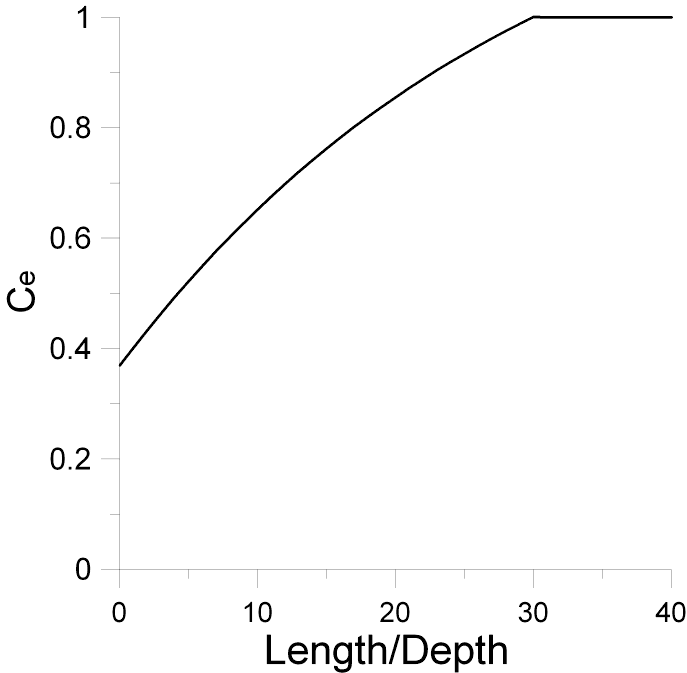Like deposition, erosion is also a temporal process. Physical processes delay erosion, potentially limiting the continuity surplus to a smaller erosion mass. Therefore, erosion also requires a temporal limiter. Unfortunately, the physical processes that delay erosion are more diverse, site specific, and difficult to quantify than those that limit deposition. The equations used are more empirical and generally less accurate.
HEC-RAS adopted its erosion limitation equation from HEC 6. It is similar to 'Characteristic Flow Length' principles, but predates them. The governing assumption, based on undocumented flume experiments, is that an unarmored reach requires thirty times the water depth for erosion to fulfill the capacity. This assumption is reflected in the equation for the entrainment coefficient:
|
C = 1.368-e^{-\left(\frac{ L}{30 \times D} \right)} |
Where: Ce is the entrainment coefficient, D is flow depth, and L is length of control volume. This equation produces the relationship between the entrainment coefficient and length/depth ratios in the figure below. HEC-RAS multiplies the sediment deficit by this entrainment coefficient to calculate erosion.
 If the length exceeds the flow depth by thirty times or more, the entrainment coefficient goes to one and HEC-RAS erodes the full deficit. In the lower limit, as the length approaches the depth, the second term of the Ce equation goes to 1 leaving a minimum entrainment coefficient of 0.368. Therefore, the program will always allow at least 36.8% of the deficit to erode.
If the length exceeds the flow depth by thirty times or more, the entrainment coefficient goes to one and HEC-RAS erodes the full deficit. In the lower limit, as the length approaches the depth, the second term of the Ce equation goes to 1 leaving a minimum entrainment coefficient of 0.368. Therefore, the program will always allow at least 36.8% of the deficit to erode.